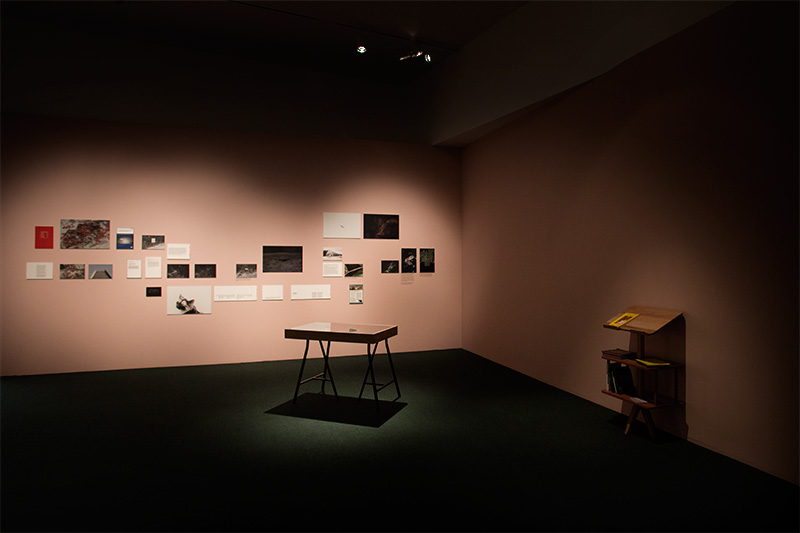final report of the christmas island expert working group
With photographs from the archives of The Institute of Critical Zoologists
An experiment in natural history investigation
Research supported by the CCA.

3 Mar 2018, Sat - 29 Apr 2018, Sun
Since the establishment of the first human settlements in the late 19th century, the ecosystem of Christmas Island—a small volcanic outcrop in the Indian Ocean which was transferred from Singapore to Australia in 1958—underwent dramatic changes. Along with human settlers, several non-indigenous species alighted on the island disrupting the endemic biodiversity that had thrived undisturbed thanks to geographical remoteness and almost nil human interference. The accidental introduction of invasive species severely impacted a fragile ecosystem, imperilling the island’s wildlife and causing the extinction of a number of native species. As a result, extreme biocontrol strategies are currently being undertaken in an attempt to restore the island’s biodiversity.
In the past two years, The Institute of Critical Zoologists has been researching the escalating chain of events brought about by the human presence on Christmas Island gathering a varied collection of research materials that merge factual and fictional elements. By surveying the impact of human beings on an endemic habitat, Final Report of the Christmas Island Expert Working Group maps out lines of invasion and retreat, it investigates dynamics of connectedness and isolation triggering reflections on states of vulnerability and conditions of survival in the age of globalisation.
Curated by Anna Lovecchio, Curator, Residencies
Launch and Artist Talk by Robert Zhao Renhui (Singapore) Friday, 2 March, 7.30 – 9.00pm The Single Screen, Block 43 Malan Road
For more information, click here.
 Experimental facility for the breeding of wasps against invasive crazy ants on Christmas Island.
Experimental facility for the breeding of wasps against invasive crazy ants on Christmas Island.
 Tahitian chestnut with scale insects that has been parasitised by wasps released on the Island. Note the small emergence hole.
Tahitian chestnut with scale insects that has been parasitised by wasps released on the Island. Note the small emergence hole.
 Plastic caps are used by hermit crabs as alternative shells on Christmas Island. The caps acts as camouflage for the crabs as they scavage among the plastic thrash on the beach.
Plastic caps are used by hermit crabs as alternative shells on Christmas Island. The caps acts as camouflage for the crabs as they scavage among the plastic thrash on the beach.
 Frigatebirds on Christmas Island have been observed drinking fresh water from pools collected at man-made clearings.
Frigatebirds on Christmas Island have been observed drinking fresh water from pools collected at man-made clearings.
 Juvenile red crabs returing from the ocean.
Juvenile red crabs returing from the ocean.

 On numerous occasions, I noticed a goshawk shadowing me in the forest as I searched for insects under fallen branches and logs. This particular individual was not shy at all. In fact, there were times when I had clear views of it for as long as 20 minutes. One day, I was traipsing through the undergrowth hunting for insects, and I didn’t bother to be quiet. Then I saw the goshawk swoop down suddenly to grab a thrush, which had flown out due to my movements in the vegetation. At that point I finally understood why it was that the goshawk was following me: It was using me as a proxy to flush potential prey.
On numerous occasions, I noticed a goshawk shadowing me in the forest as I searched for insects under fallen branches and logs. This particular individual was not shy at all. In fact, there were times when I had clear views of it for as long as 20 minutes. One day, I was traipsing through the undergrowth hunting for insects, and I didn’t bother to be quiet. Then I saw the goshawk swoop down suddenly to grab a thrush, which had flown out due to my movements in the vegetation. At that point I finally understood why it was that the goshawk was following me: It was using me as a proxy to flush potential prey.
R. Zhao, Field notes on the foraging ecology of the Christmas Island Goshawk (Accipiter fasciatus natalis), Institute of Critical Zoologists, Journal No. 174, 2015
Installation View




 Items in vitrine:
Items in vitrine:
Scale insect on Tahitian chestnut tree
A piece of coral with harden molten plastic washed up on the shore of Christmas Island.
Caps that were used by hermit crabs as alternative shells.




Copyright 2018, Institute of Critical Zoologists and The Land Archive